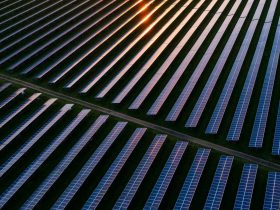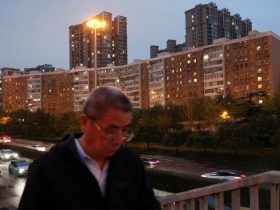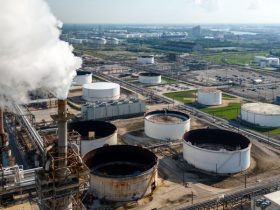Tesla CEO Elon Musk unveiled on Thursday his vision of a “a fun, exciting future,” an “age of abundance” full of his company’s self-driving cars without steering wheels, parking lots turned into parks and robots that will walk among the population – that he once again promised would be available within a few years.
Whether he can live up to these promises remains to be seen.
Those plans, and the revelation of the designs for his robotaxis, came at a glitzy event in California, full of the kind of hype that has built Tesla (TSLA) a dedicated fan base for its electric vehicles. The event featured models of the robotaxi as well as a Robovan, a driverless vehicle designed to carry a larger group of people or items.
The designs were heavy on a metallic, shiny sci-fi aesthetic of the future. Musk himself even referenced the classic science fiction movie “Blade Runner,” although he said he wanted his version of the coming years to be cheerier than that dystopian noir film.
Musk is famous for promising near-term targets that take years or more to reach. He had predicted five years ago that his fleet of robotaxis were only a year away. During his presentation at the Warner Bros. studio lot late Thursday, even he admitted: “I tend to be a little optimistic with time frames.”
The event unveiling these products, which was livestreamed to millions of viewers on his social media platform X, began 53 minutes late.
But the delay seemed to matter little to the in-person crowd waiting for the chance to ride in the 50 self-driving vehicles that were cruising around the studio lot. They continued to cheer Musk throughout his relatively short 20-minute presentation.
Tesla has long offered what it calls Full Self-Driving or FSD, currently priced at $8,000, as an option on its cars. But despite its name, Tesla says drivers need to continue to sit in the driver’s seat, ready to take over control of the vehicle, even when in FSD mode.
Musk said Thursday that Teslas with FSD would be able to operate wherever state regulators would allow without human intervention, predicting that would occur in California and Texas by next year. And he also unveiled the Cybercab, a vehicle without steering wheel or accelerator or brake pedals which is specifically designed to carry passengers without a driver present, which he said should be in production by 2026.
“It’ll be like sitting in a comfortable little lounge,” he said. “Yeah, it’s going to be awesome.”
He said the Robocab, unlike other electric vehicles, would have no plug but would be charged by driving over a charging plate. And he also showed a larger vehicle that he said could carry up to 20 passengers or goods, which he called a “Robovan,” although he gave no timeframe for the introduction of that vehicle.
Musk has insisted that the company’s data shows that FSD is already safer than cars driven by humans. But others who have tested that feature question whether that is true. One independent testing service, AMCI Testing, found that drivers needed to take control every 13 miles on average.
This is certainly not the first time that Musk has laid out ambitious time frames for his plans for self-driving cars. In a July call with investors, Musk said he expected to have “unsupervised (driving) possibly by the end of this year,” adding “I would be shocked if we cannot do it next year.”
But he also conceded, “obviously my predictions on this have been overly optimistic in the past.”
“I’m the boy who cried FSD. But I think we’ll be better than humans by the end of this year,” he said in a call with investors in July 2023, before adding: “I’ve been wrong in the past. I may be wrong this time.”
And even some analysts who believe that Tesla will eventually come up with the technology needed to have driverless vehicles carrying passengers believe that achievement is at least several years into the future.
“We’re looking at disengagements at 3% of miles driven,” said Gene Munster, managing partner at Deepwater Asset Management, about the number of times that a human driver needs to take control, in an interview with CNN earlier this week.
“While 97% of the way there sounds close, it’s not even close. It has to be well above 99%. And to go from 95 or 97% to 99% is really hard. And then there’s the question of how many 9’s the regulators will want to see. Is it 99.9%, 99.999%?” he added.
“I think it’ll take two years to get the technology right,” Munster said. “And two to three more years to get the needed regulatory approval.”
This story has been updated with additional context and developments.
Read the full article here













Leave a Reply